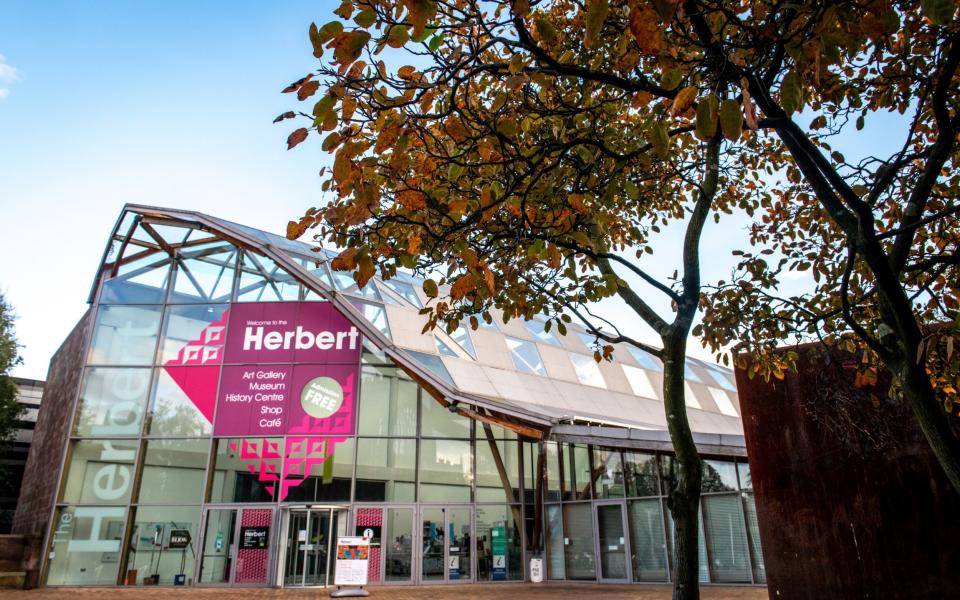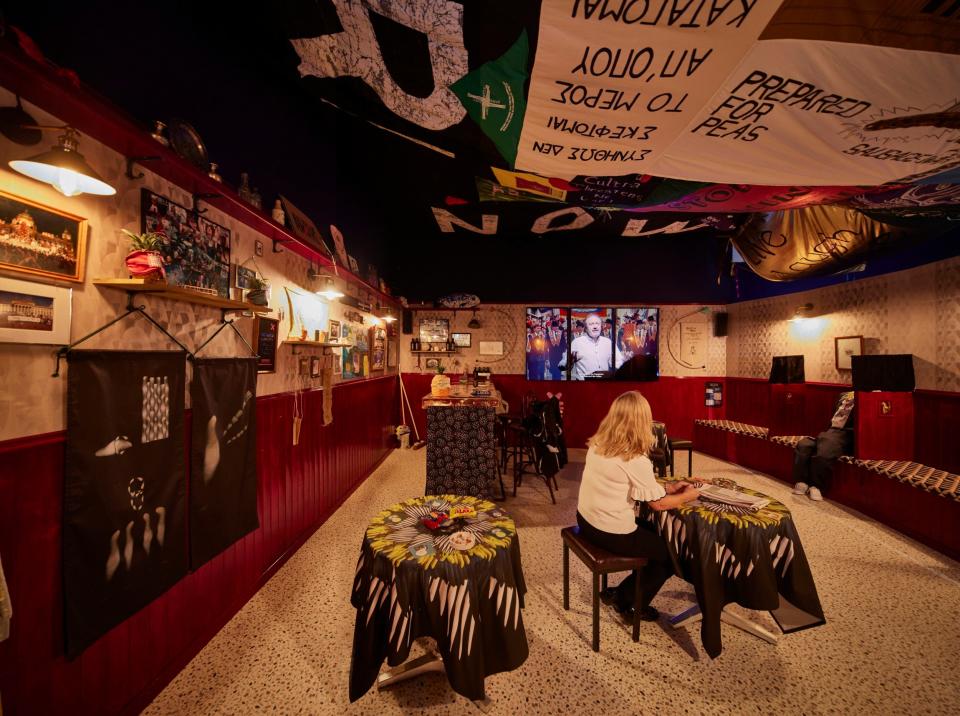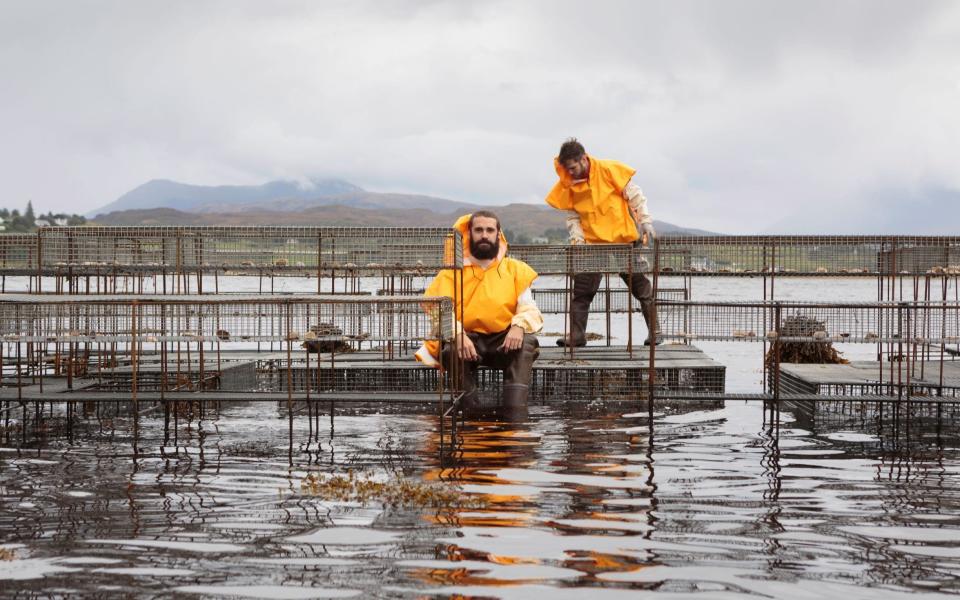The worthiest Turner Prize ever – and maybe the worst

Kindness, community, healing, empathy, care: these are the watchwords of the 2021 Turner Prize, craftily designed to reflect the national spirit of pot-clanging solidarity awakened during the pandemic. For the first time in the prize’s history, the shortlist consists exclusively of five “artist collectives” and “artist-run projects”, all of which, according to the official hype, “inspire social change through art”. There isn’t an individual artist in sight, while, in a suspiciously neat move, all four nations of the United Kingdom are represented. Is this the worthiest edition of the award? You bet. It is also, perhaps, the worst.
The start of the exhibition opening this week in Coventry is the most boring curtain-raiser to a show I can remember. Enter, stage right, “collaborative cultural project” Gentle/Radical. Established in Cardiff’s Riverside neighbourhood in 2017, this group consists of – who, exactly? A wall text reveals that they’re a motley crew of faith ministers, youth workers, conflict resolution trainers, community activists, writers… The list goes on. Any artists? A smattering, perhaps. Not that, in today’s art world, being an artist is a requisite for success.
In a three-screen video installation, 10 members of the group read in turn from texts they’ve written for the occasion. A bald chap sitting by a railway line prattels on about “queerness” before comparing foraging for mushrooms to finding God. “I feel I’m doing ancestral work every day,” says a bespectacled woman leaning against a playground’s fence. Good for her.
Who are these well-meaning people, and why do they insist on therapy-speak? Nearby, a complicated flowchart (one of several in the exhibition) outlines the “principles” and “methodologies” of Gentle/Radical “as an organism”. Other than affirming, though, that spirituality, healing, and dismantling capitalism are dear to their hearts, it doesn’t help.
We’re told that the group’s “hyper-local approach”, organising workshops, poetry readings, film screenings, etc., benefits its community. No doubt. But why are they here, participating in an exhibition inside an art gallery? I have no beef with the good people of Gentle/Radical, just the wrong-headed individuals who thought it wise to shortlist them for the Turner Prize. This group has nothing to do with the prize’s remit: to illuminate new developments in British art.

It’s a similar story with Project Art Works, an organisation from Hastings that, we learn, operates “at the intersection of art and care”. Nobody would fault what they do, encouraging “neurodivergent” artists and “makers” to realise their creativity. A film documents several people with whom they have collaborated, delightedly squeezing tubes of paint, manipulating pipe cleaners, making marks. Nearby, we find some of their pictures of animals and buildings – what used to be called “outsider art”. Ironically, though, the paintings on display aren’t why Project Art Works is on the shortlist. Rather, in the judges’ view, it’s the organisation’s social impact that warrants its inclusion. Indeed, throughout the show, it’s taken as a given that art should drive social change. Why?

Compared with these two bizarre choices, the remaining nominees feel relatively orthodox. To mark the centenary of Ireland’s partition, Array, a collective of artists and activists from Belfast, who describe themselves as latter-day “spell casters” and druids, presents a mock-up of an old-fashioned boozer, with models of ashtrays upon the tables. The lighting is low, the walls decorated with mirrors and memorabilia: you can almost hear the drunken din of people enjoying the craic. This could be the set for Jez Butterworth’s latest raucous West End hit.

Overhead, though, a canopy of hand-stitched banners celebrates marches and protests with which Array has been involved: “Get Your Rosaries Off My Ovaries”, reads one. With its Wicker Man vibe, this inn is, as Array puts it, a “shelter” for Northern Ireland’s marginalised and oppressed. Forget paint, plaster, even video or performance: activism is, it seems, the most modish artistic material of our times.
Black Obsidian Sound System (B.O.S.S.), a group of “queer, trans and non-binary black people and people of colour involved in art, sound and radical activism”, established in London in 2018, railed against the “exploitative practices” of the Turner Prize earlier this year. Still, they’re taking part, by rehashing an installation shown recently at the Liverpool Biennial: a sound system in a darkened room which replicates the sensation of being inside a nightclub. Next door, visitors can chillax on black beanbags, beside a “healing” sphere of volcanic rock, while listening to inaudible, interminable interviews with members of the collective. In my view, B.O.S.S. could do with a bit more of the “individual artistic ego” they abhor.
Compared with everything else, the finale, by Cooking Sections, a London-based duo of self-styled “spatial practitioners”, feels as spectacular as a summer blockbuster. They’re known for railing against the environmental impact of intensive salmon farming, and do so again here.
In a long, dark gallery, aerial footage of eight circular salmon farms is projected in two rows of four upon the floor. A woman’s voice encourages us to imagine how awful the conditions are for the poor fish, who, every now and then, jump above the water’s dirty surface, like prisoners trying to break free. Although the piece lost me when it started blaming the industry’s ills upon “empire” and “British colonists”, its claustrophobic, Matrix-like hellscape of endlessly spinning blue circles is effective: at the station, on my way home, I refrained from buying a salmon sandwich.

Cooking Sections are front runners to be anointed winners at Coventry Cathedral on Dec 1. When the competition, though, is this dreary and irrelevant, the prize’s reputation is harmed. This is the third year in a row in which the Turner Prize has been disrupted by jiggery-pokery: in 2019, at the request of the nominees, it was shared; last year, amid the pandemic, it was suspended altogether, and 10 artist bursaries were doled out. The judges must stop believing that their input is, itself, a quasi-artistic act, and instead simply reward excellence which reflects what’s happening in British art.
From Sept 29. Details: tate.org.uk

